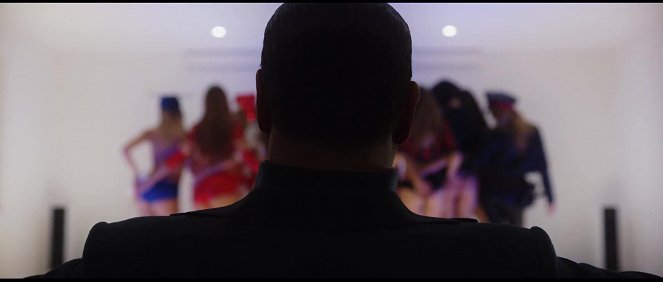Réalisation:
Paolo SorrentinoPhotographie:
Luca BigazziMusique:
Lele MarchitelliActeurs·trices:
Toni Servillo, Elena Sofia Ricci, Riccardo Scamarcio, Kasia Smutniak, Ricky Memphis, Roberto De Francesco, Fabrizio Bentivoglio, Euridice Axen (plus)Résumés(1)
Il a habité nos imaginaires par la puissance de son empire médiatique, son ascension fulgurante et sa capacité à survivre aux revers politiques et aux déboires judiciaires. Il a incarné pendant vingt ans le laboratoire de l’Europe et le triomphe absolu du modèle libéral après la chute du communisme. Entre déclin et intimité impossible, Silvio Berlusconi incarne une époque qui se cherche, désespérée d’être vide. (Pathé Films)
(plus)Vidéo (4)
Critiques (2)
Un mouton et de nombreuses chèvres. Inutile sur le plan du contenu, trop long, semi-fonctionnel du point de vue de la mise en scène (faible connexion entre la première et la deuxième moitié). Il s'appuie paresseusement sur l'attrait de la matière et de l'environnement, sur la perfection formelle et sur la performance d'acteur de Servillo. La réflexion artistique sur le sujet est seulement suggérée, non complexe.
()
Women's breasts and bottoms (and not much else) are on display in approximately 40% of the scenes in Sorrentino's new film, mostly during the first fifty minutes, placing Loro in the company of The Wolf of Wall Street (there is also a lecture on the effects of a certain drug), Spring Breakers and Tinto Brass’s Caligula (decadence for the sake of decadence). Ten percent would have been enough to get the necessary point across. It’s the same with everything else in Sorrentino’s latest work. It is a film that seeks meaning, just like its protagonist, who fears aging, death and being forgotten. It presents a void of thought in an opulent package, which in and of itself bears a certain message, but you needn’t see it over and over again for two and a half hours. At the same time, Loro does not bring many motifs to fruition (one such example, which goes nowhere, is the formulation of parallels between lust and the desire for power, thus politics and exploitation of foreign bodies, starting with a prologue in which one of the characters devises his plan while looking at Berlusconi tattooed on the back of a woman he is having sex with). Paradoxically, the film could possibly benefit from being an hour longer rather than shorter (i.e. as in the case of its division into two parts, shown in Italian cinemas) and thus legitimise what comes across as self-serving and empty. No essential knowledge emerges from the final synthesis of the perspectives presented in the first and second of the three chapters of approximately equal length into which the film is divided (Berlusconi hardly appears in the first one). Even more conspicuously than Sorrentino’s previous films, Loro is reminiscent of a series of perfectly synched music videos packed with excellent ideas (the upper crust’s only real encounter with the real world happens when a garbage truck explodes in front of them) which when taken together, however, do not communicate much of anything or gel into a consistent form that would bear at least a somewhat relevant message and not merely repeat what Sorrentino was able to express more impactfully in Il divo. When in the conclusion the narrative finally focuses on the tragedy of real people, it is framed with the same unnatural pathos that characterises the rest of the film, which tells about fake people. Loro is a waste of talent on the part of the director and a waste of time for the viewer. 65%
()



Annonces